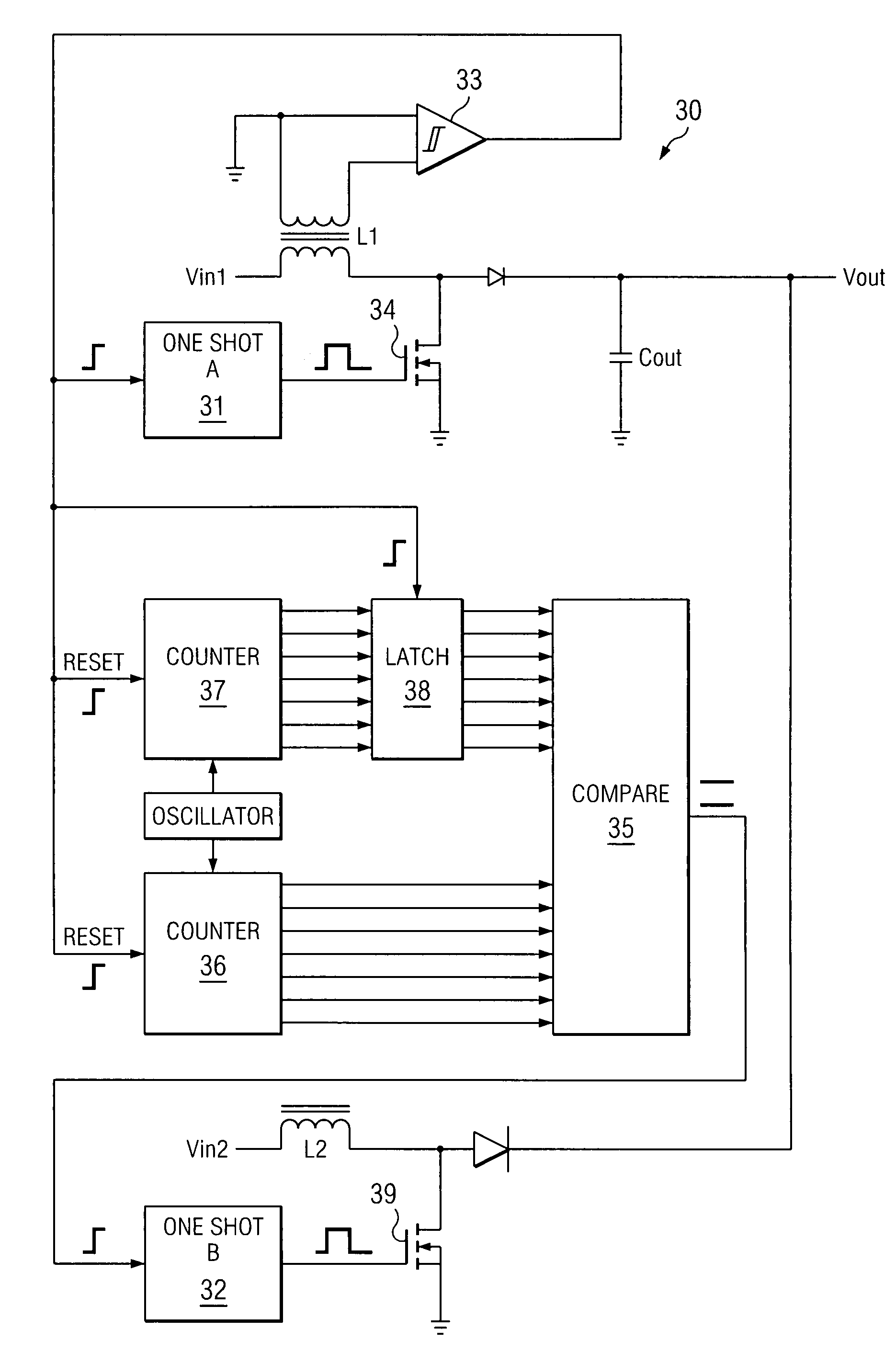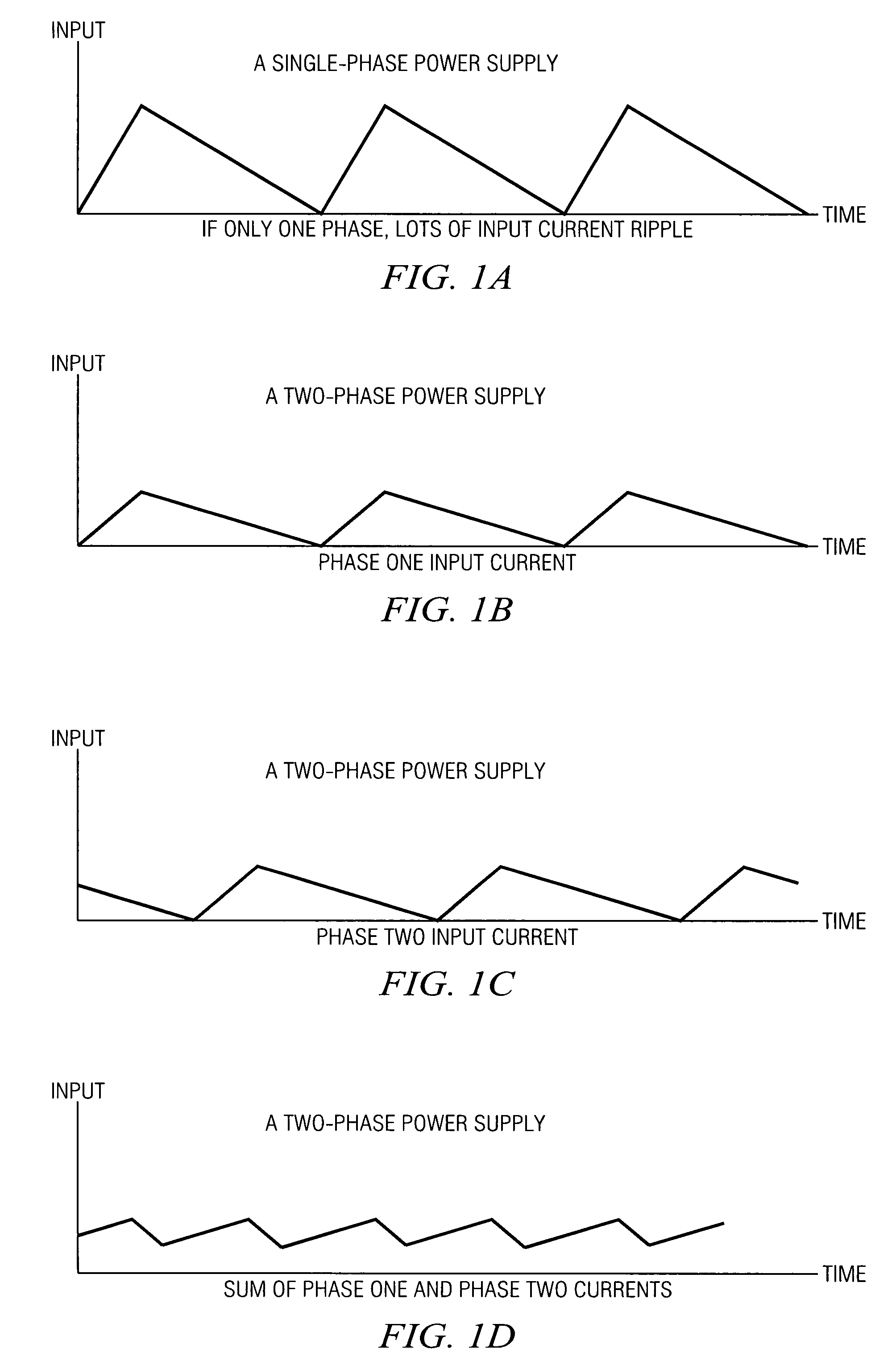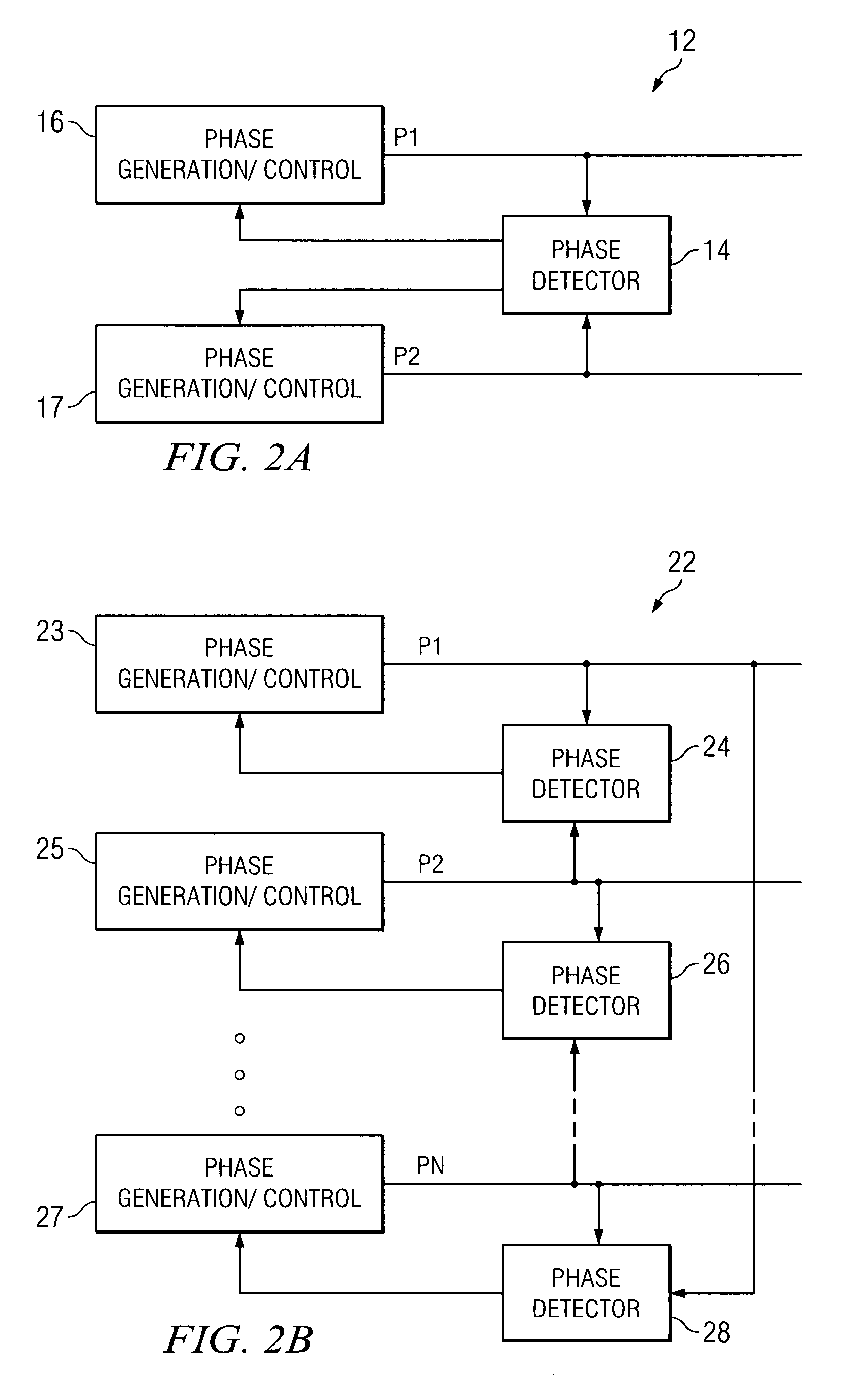Method and apparatus for multi-phase power conversion
a multi-phase power conversion and power factor technology, applied in the field of multi-phase power conversion, can solve the problems of increasing the cost of power converters, complexity and size, and the difficulty of acquiring and maintaining phase locks, and achieves the effects of reducing or eliminating the impact of inductor tolerance, improving circuit efficiency, and improving power factor
- Summary
- Abstract
- Description
- Claims
- Application Information
AI Technical Summary
Benefits of technology
Problems solved by technology
Method used
Image
Examples
Embodiment Construction
[0062]This application claims the benefit of U.S. Provisional Application Ser. No. 60 / 796,420, filed May 1, 2006, the entire content of which is hereby incorporated herein by reference.
[0063]Referring to FIGS. 1a-1d, plots of input current verses time are illustrated for a single phase power supply and a power supply with two interleaved phases. FIG. 1a illustrates a single phase power supply that exhibits a significant amount of input current ripple. FIGS. 1b-1d illustrate input current for each of two phases, and the sum of the current of the two phases, respectively. The sum of the two current phases shown in FIG. 1d produces a current with lower peak current, lower ripple, and a ripple frequency that is twice the frequency of the two input current phases. A variable frequency PWM control may be used to produce an interleaved multiphase power supply with such an advantageous summed current. However, the realization of the variable frequency PWM control is somewhat challenging in ...
PUM
 Login to View More
Login to View More Abstract
Description
Claims
Application Information
 Login to View More
Login to View More - R&D
- Intellectual Property
- Life Sciences
- Materials
- Tech Scout
- Unparalleled Data Quality
- Higher Quality Content
- 60% Fewer Hallucinations
Browse by: Latest US Patents, China's latest patents, Technical Efficacy Thesaurus, Application Domain, Technology Topic, Popular Technical Reports.
© 2025 PatSnap. All rights reserved.Legal|Privacy policy|Modern Slavery Act Transparency Statement|Sitemap|About US| Contact US: help@patsnap.com



